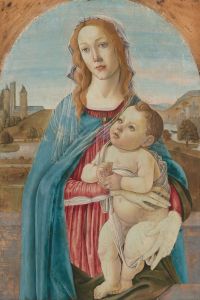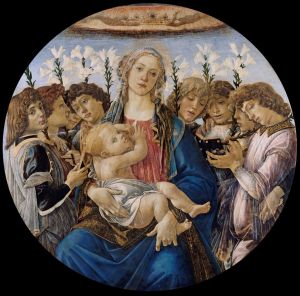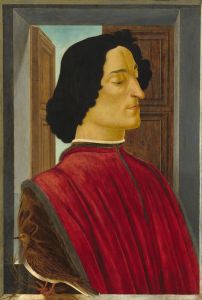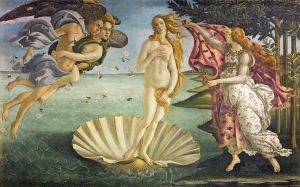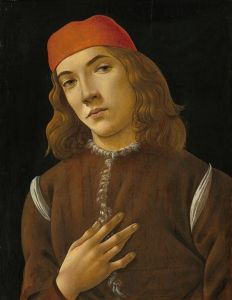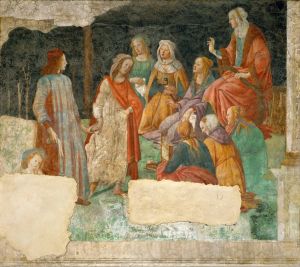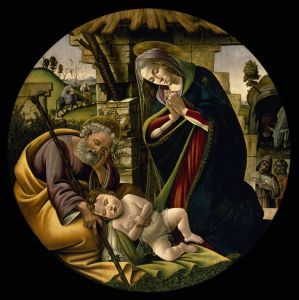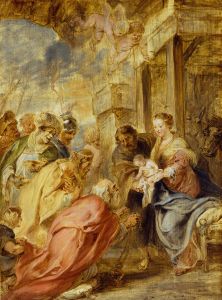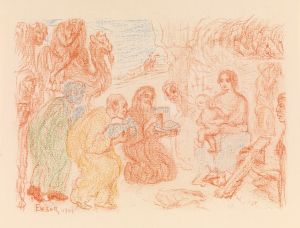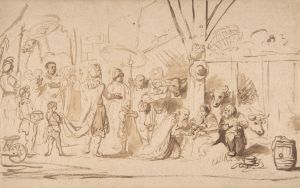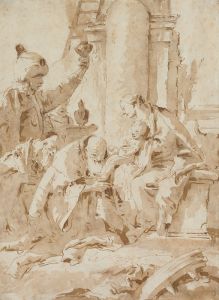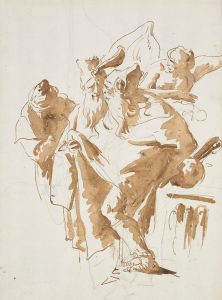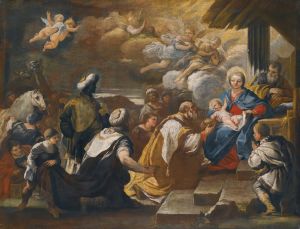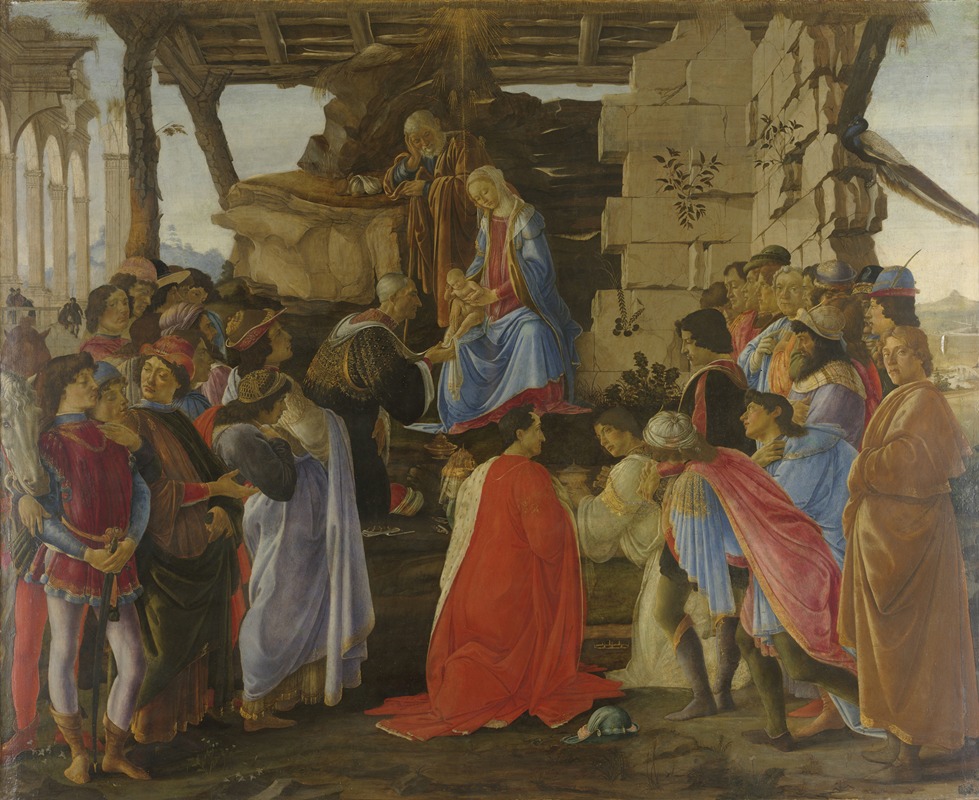
Adoration of the Magi
A hand-painted replica of Sandro Botticelli’s masterpiece Adoration of the Magi, meticulously crafted by professional artists to capture the true essence of the original. Each piece is created with museum-quality canvas and rare mineral pigments, carefully painted by experienced artists with delicate brushstrokes and rich, layered colors to perfectly recreate the texture of the original artwork. Unlike machine-printed reproductions, this hand-painted version brings the painting to life, infused with the artist’s emotions and skill in every stroke. Whether for personal collection or home decoration, it instantly elevates the artistic atmosphere of any space.
Sandro Botticelli's "Adoration of the Magi" is a renowned painting that exemplifies the artist's mastery of the Early Renaissance style. Created around 1475-1476, this work is housed in the Uffizi Gallery in Florence, Italy. It is celebrated for its intricate composition, vivid color palette, and the inclusion of contemporary figures from Botticelli's time, which adds a layer of historical significance to the piece.
The painting depicts the biblical scene of the Adoration of the Magi, where the three Wise Men visit the newborn Jesus, presenting him with gifts of gold, frankincense, and myrrh. This event is a popular subject in Christian art, symbolizing the recognition of Christ's divinity by the Gentiles. Botticelli's interpretation is notable for its detailed portrayal of the figures and the rich, dynamic arrangement of the composition.
In the foreground, the Virgin Mary is depicted seated with the infant Jesus on her lap. She is surrounded by the Magi, who are shown in various poses of adoration and offering. Joseph stands nearby, observing the scene. The figures are arranged in a pyramidal composition, drawing the viewer's eye towards the central figures of Mary and Jesus. This compositional technique is characteristic of Renaissance art, emphasizing balance and harmony.
One of the distinctive features of Botticelli's "Adoration of the Magi" is the inclusion of portraits of prominent members of the Medici family, who were influential patrons of the arts in Florence. The Medici were known for their support of artists, and their presence in the painting reflects their status and influence during the Renaissance. Among the figures, it is believed that Botticelli included a self-portrait, positioning himself as an observer within the scene, which was a common practice among artists of the time.
The background of the painting is filled with architectural ruins and a landscape that suggests a setting of both historical and spiritual significance. The ruins may symbolize the decline of the old pagan world and the rise of Christianity. Botticelli's use of perspective and attention to detail in the background enhances the depth and realism of the scene.
Botticelli's technique in this painting demonstrates his skillful use of line and color. The figures are outlined with precision, and the drapery of their garments is rendered with a sense of fluidity and movement. The colors are vibrant yet harmonious, contributing to the overall aesthetic appeal of the work.
"Adoration of the Magi" is an exemplary work of Botticelli's early career, showcasing his ability to blend religious themes with contemporary elements. It reflects the cultural and artistic milieu of Florence during the Renaissance, a period marked by a renewed interest in classical antiquity and humanism. The painting remains a significant piece of art history, admired for its beauty and the insight it provides into the society and values of its time.






